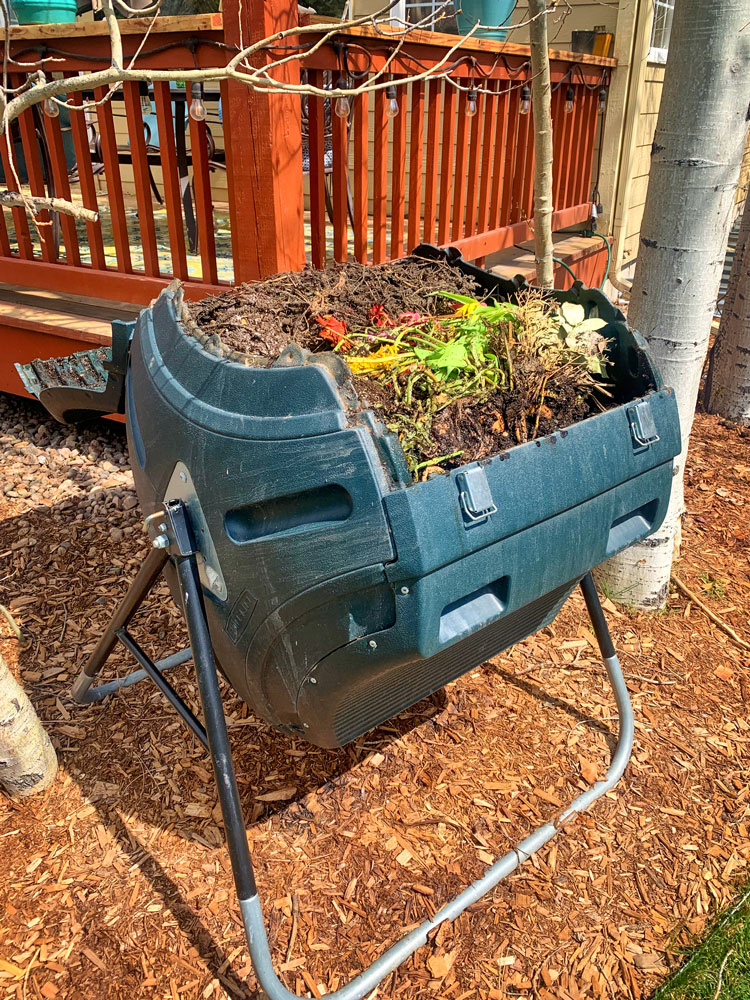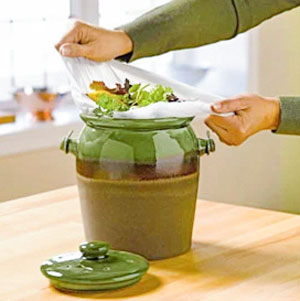Composting basics
By Lisa Nicklanovich; photo courtesy of Sally Wagner, courtesy photo

Neighbor Sally Wagner’s backyard batch composting system. If you are concerned about curious or hungry critters, use an enclosed composter and only put vegetable scraps and yard waste in
There are those who may think composting is dirty, gross, confusing and time consuming, but here is another look. Tossing kitchen and yard scraps in a bin and then getting free fertilizer for the lawn and garden is all there is to it. Well, okay, maybe there’s a little more to know, but it’s a great way to recycle and divert organic material from landfills, doing the planet a great favor.
Resident and master gardener Leigh Houston has composted for well over a decade. “I compost to reduce my waste and to get rich soil amendment for free,” Houston said. Houston uses an open mesh wire bin with two sections. “One side is our ‘finished’ compost, the other side is what we actively add to. Once we pull out the finished compost to use in the garden, we start using that side for new stuff for the other side to finish,” Houston explained.
Whether using a batch composting system like Houston or a continuous composter in which material is added to one bin, a nutrient-rich soil will eventually be the end product. Batch composting is faster but needs to be turned often which can be done manually or in a tumbler. Compost is generated more slowly in a continuous composter. It is mostly left alone. The finished compost filters to the bottom of the bin and can be removed a few times a year.

An example of a ceramic countertop composing container. Note the holes in the lid allow air to still reach the food items, and a charcoal filter in the lid helps mitigate potential odors.
Composting requires four basic elements: water, oxygen, nitrogen and carbon. Water is necessary for sustaining the microbial life in the pile and oxygen maintains aerobic conditions. Nitrogen-rich materials or “greens” typically have moisture and contain a higher ratio of nitrogen to carbon. Greens are food scraps, grass, coffee grounds and filters. Carbon-rich materials, or “browns” help balance the green materials and are typically dry, brittle materials like leaves, straw, newspaper and wood chips.
Houston said, “In the summer, I put in all my trimmings from tending my plants and grass clippings every now and then (usually I just let my grass clippings stay on the grass, it’s best for the lawn). In the fall, I use my lawnmower to mulch and collect leaves to compost. In the winter, it’s mostly food scraps. We just put in what we have when we have it.”